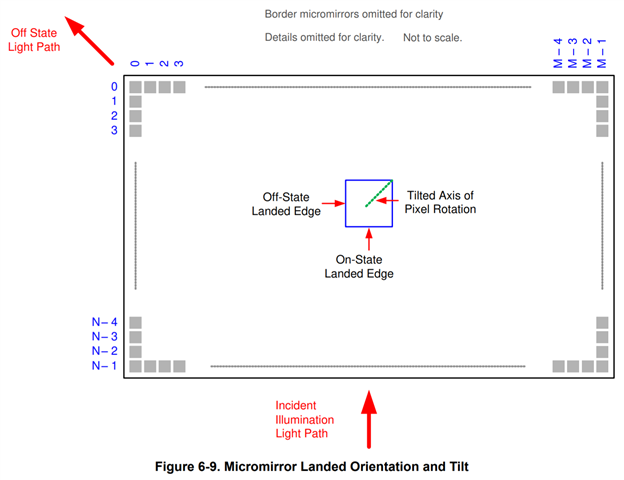Other Parts Discussed in Thread: DLPDLCR660TEVM, , DLP660TE, DLPC4422
Hi Sir,
I bought TI's DLPDLCR660TEVM and DLPLCRDC4422EVM,
I have some queries about their use together.
How precision can the mirror angle of DLPDLCR660TEVM be controlled,
In addition, for example, when the mirror angle is changed from horizontal to horizontal to 1 degree, what kind of input image should be prepared?
If our product connects the binary input image to DLPLCRDC4422EVM and PC and inputs the above products, the angle can be changed to the mirror. Is this correct?
Thanks.
Regards,


